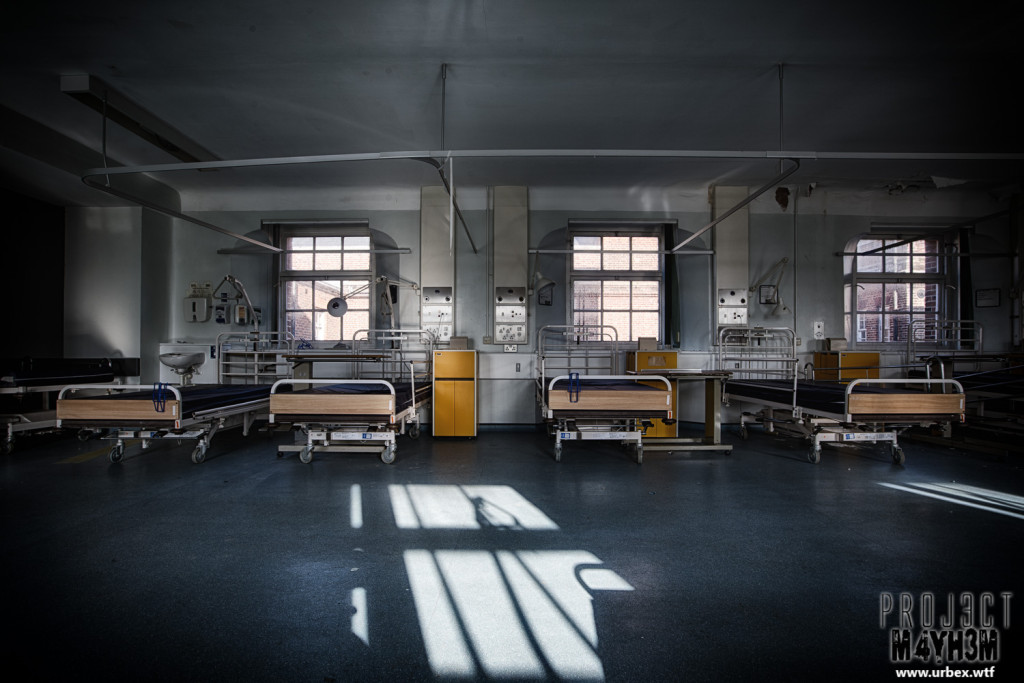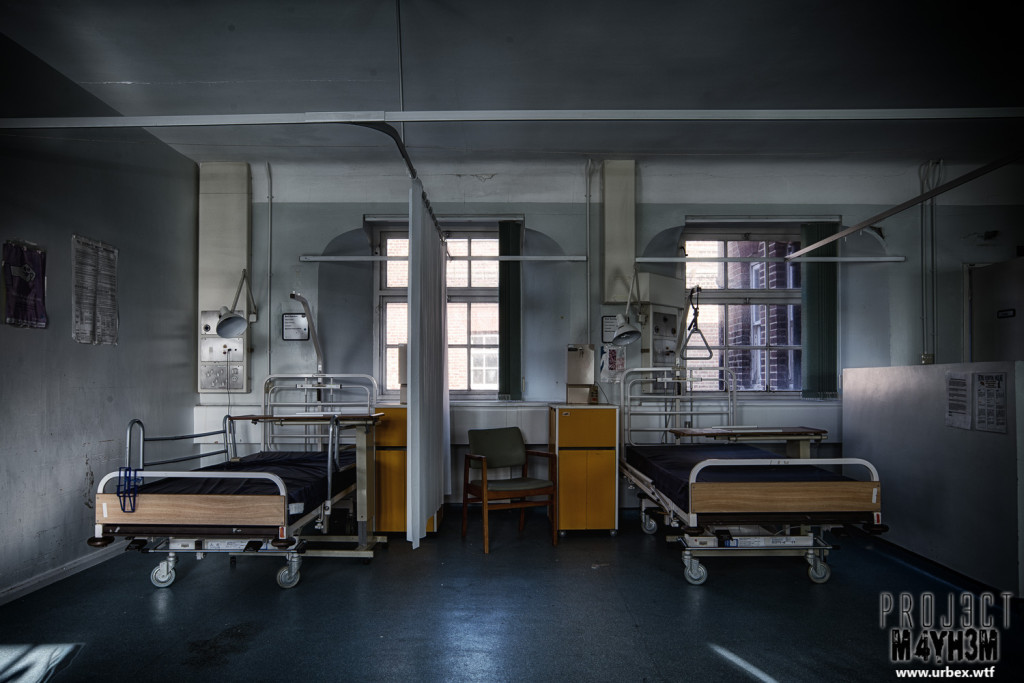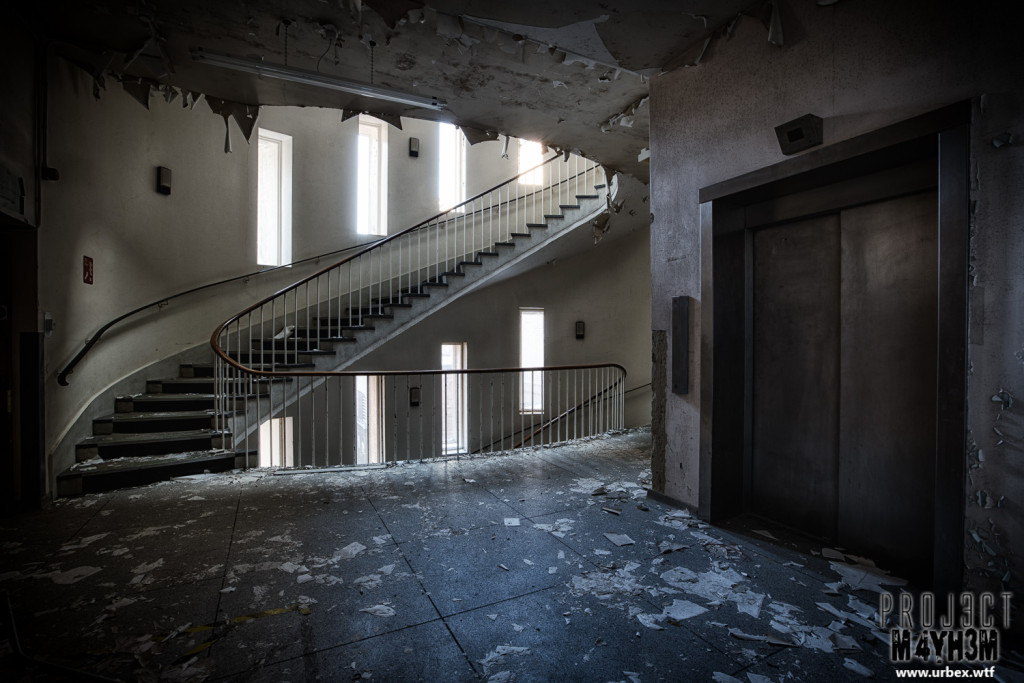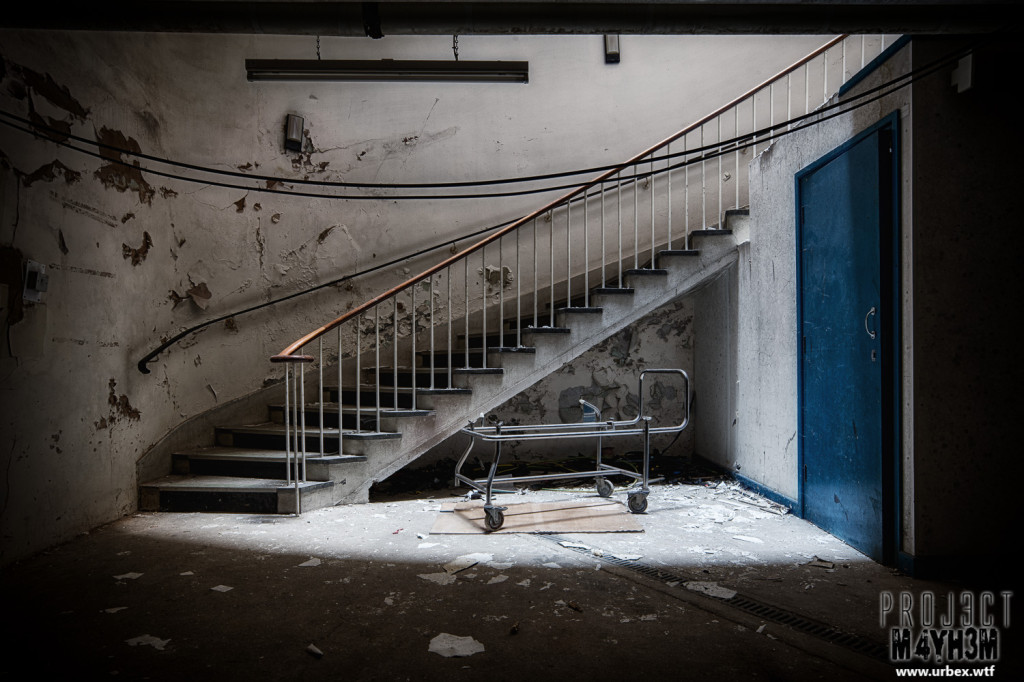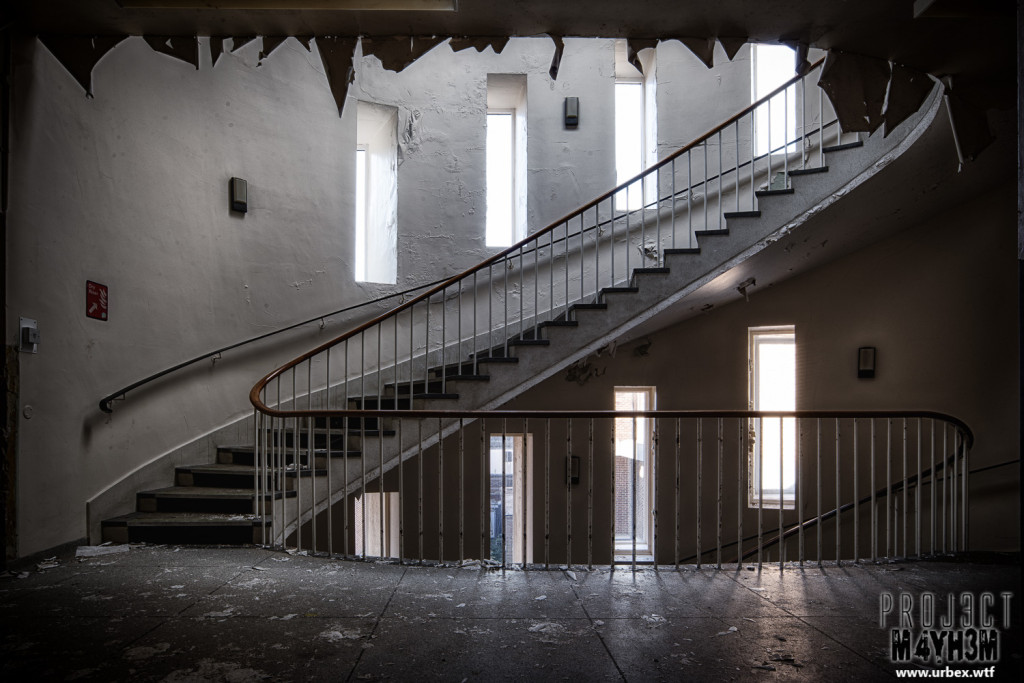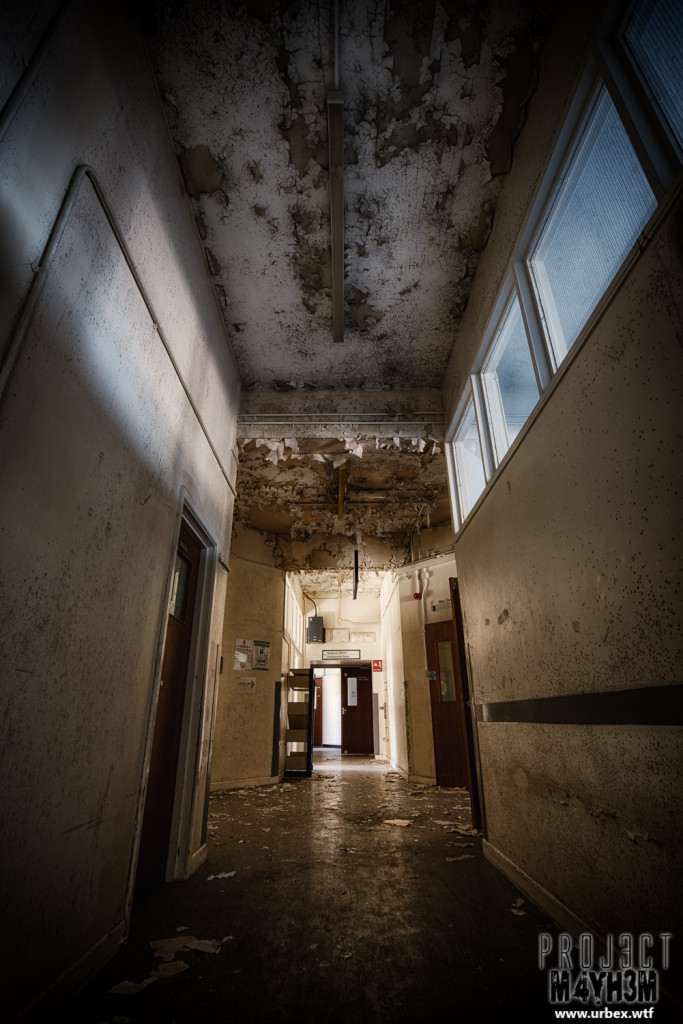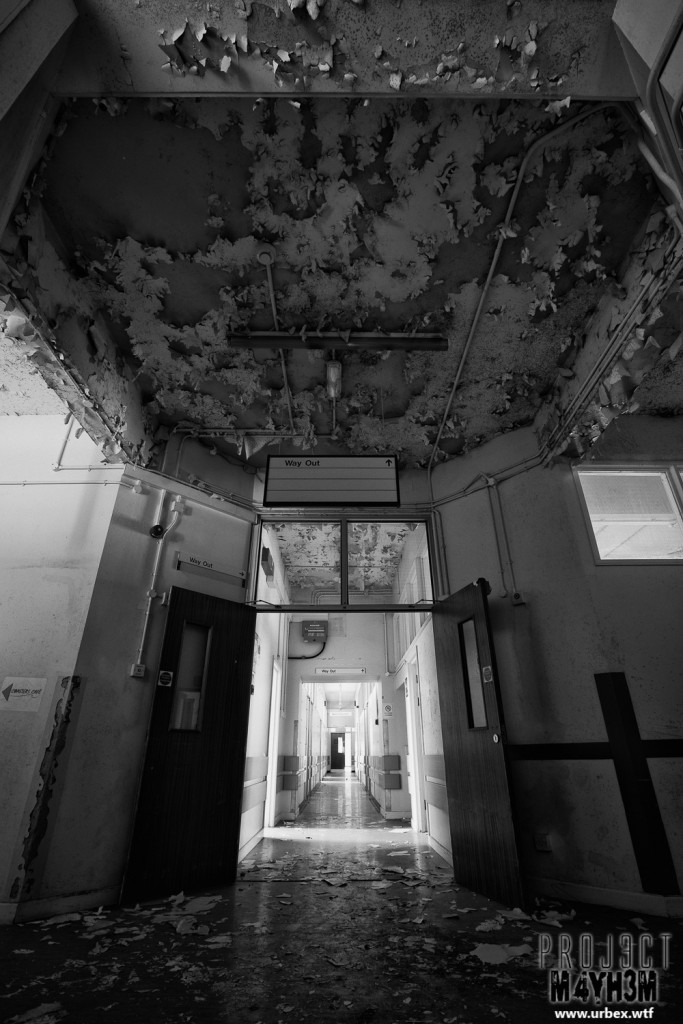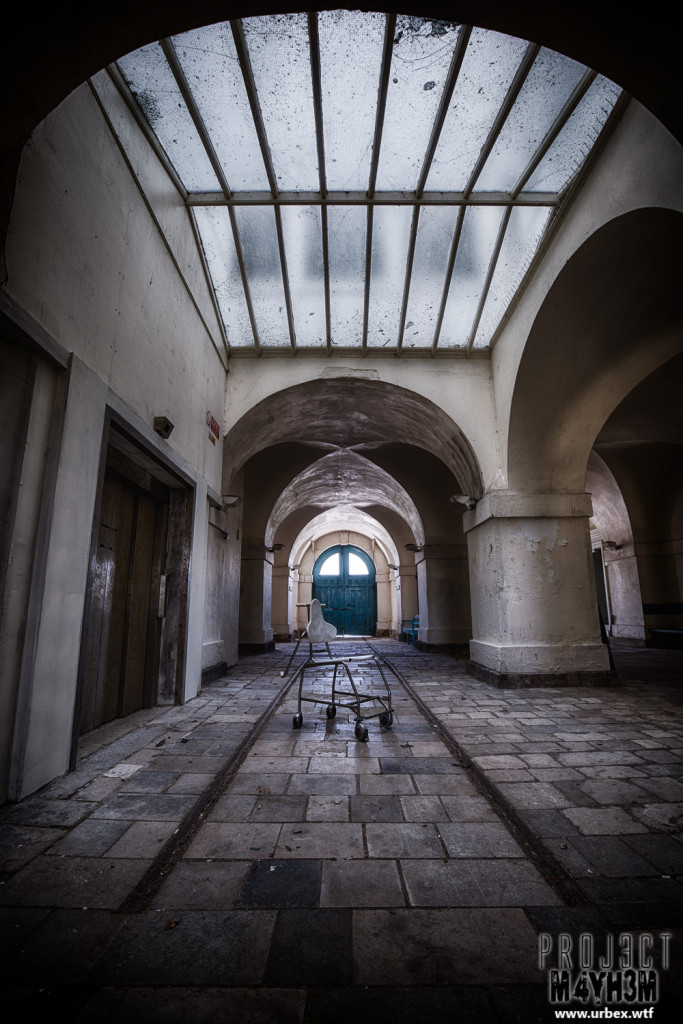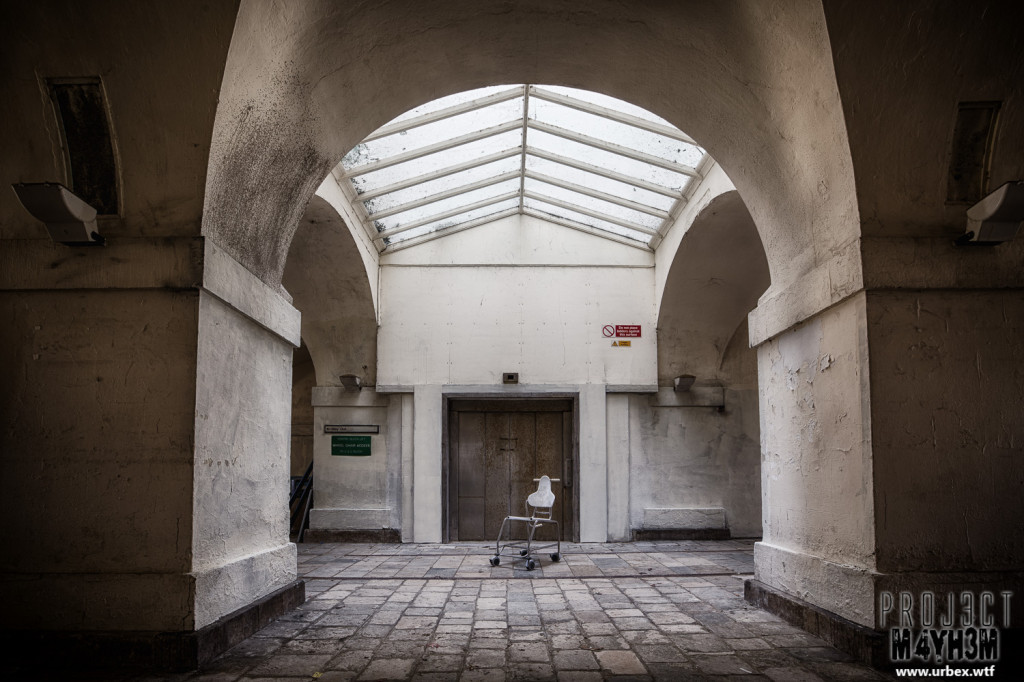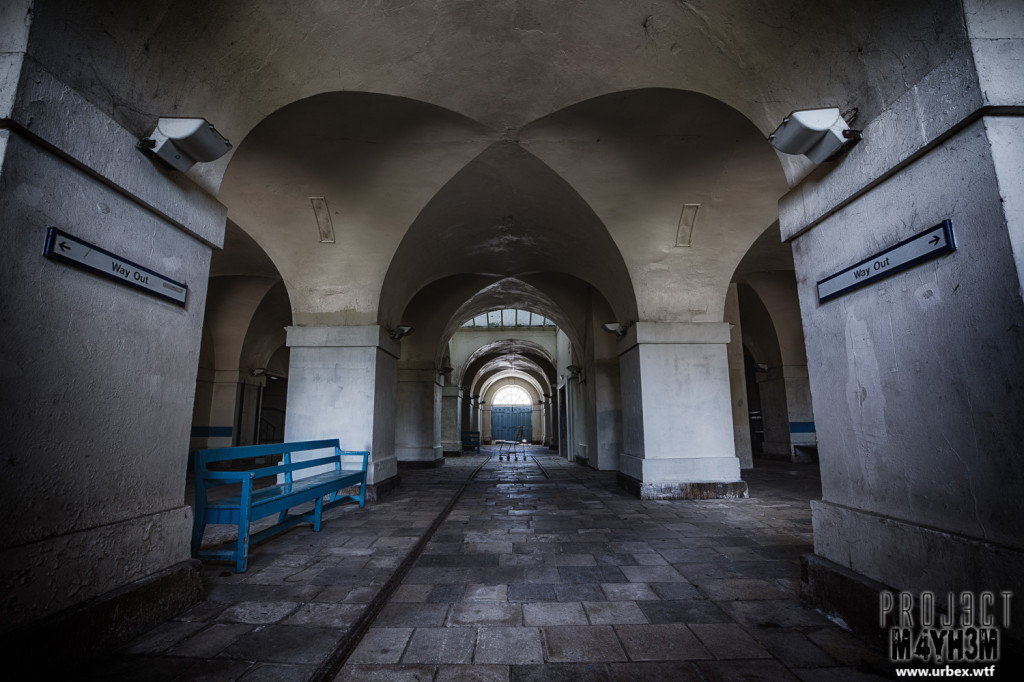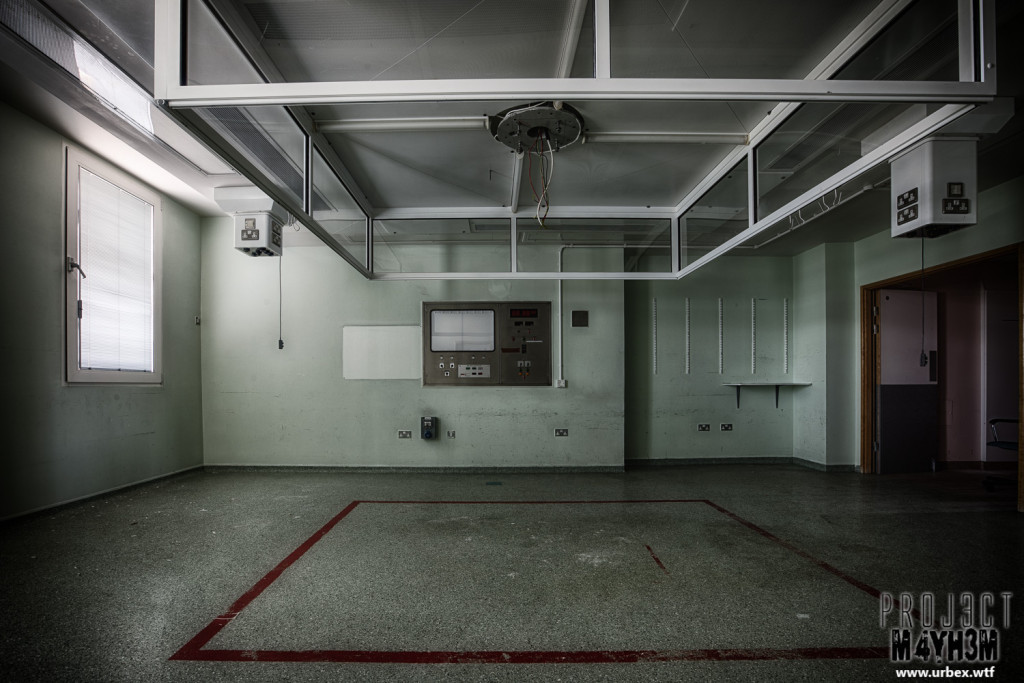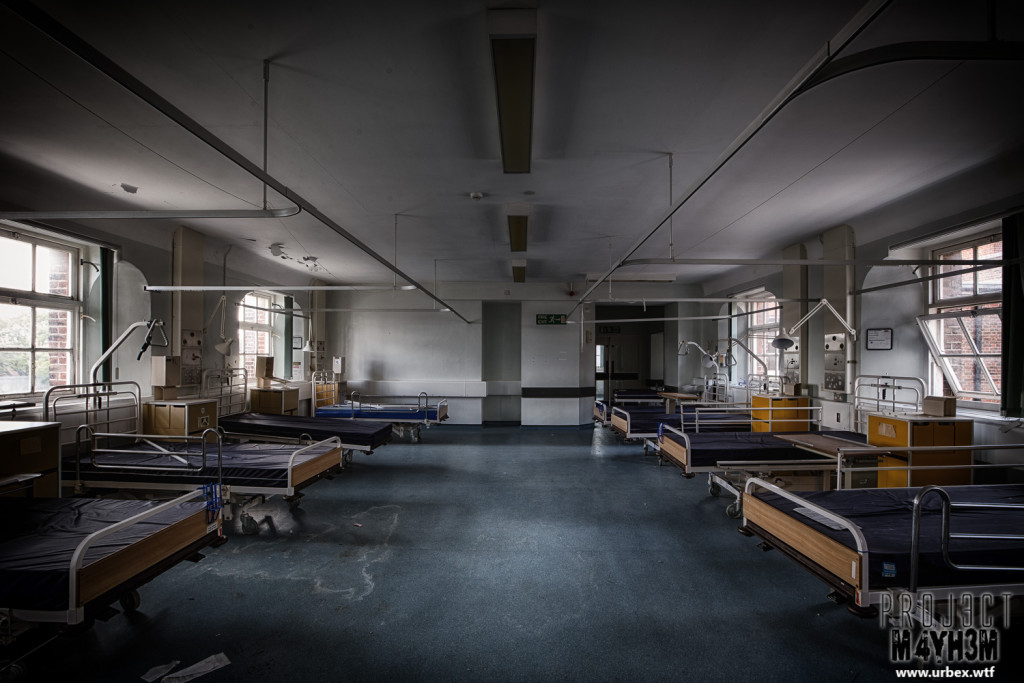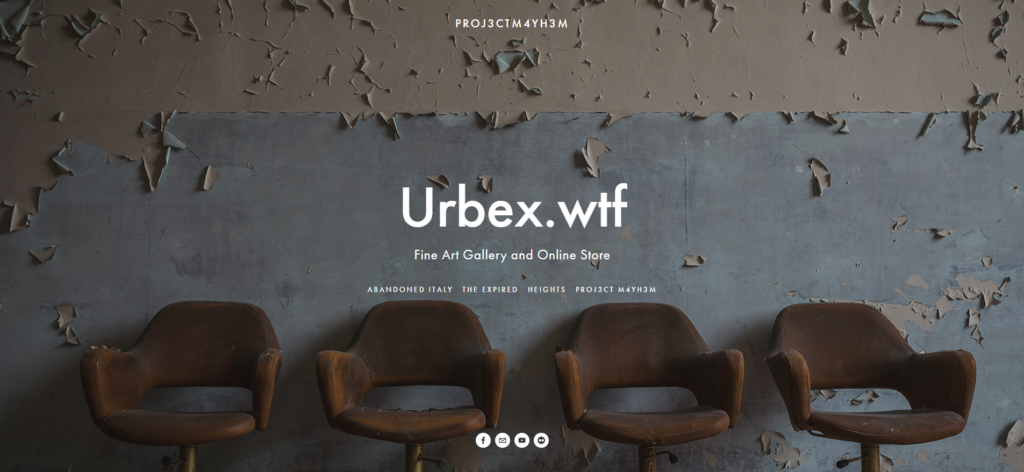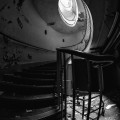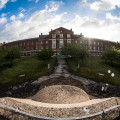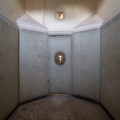
History
The Royal Hospital Haslar was founded in 1753 and was designed and built by Theodore Jacobsen between 1946-1961. When it was constructed it was both the largest hospital and brick built building in England. Britain’s first Naval Hospital which span a huge area on the coastline of Gosport is also the site of a massive unmarked grave site with an estimated 7,785 buried sailors.
The Hospital was built on Haslar creek just up the coast from the harbour. After the sick and wounded were delivered to the shore from the main battleships they would be loaded onto handcarts and pushed into the main entrance of the hospital where the original tracks are still present to this day leading from the shoreline.
The hospital also included an asylum for sailors with psychiatric disorders, and an early superintending psychiatrist was the phrenologist, Dr James Scott (1785–1859), a member of the influential Edinburgh Phrenological Society.
This gigantic hospital opened with enough beds to service 1800 patients and cost £100,000 to construct.
Because of the high number of deserters from the navy ranks Haslar was built at the end of a peninsula and was originally planned to have 4 sides and the building was designed to be a prison as much as it was a Hospital. There are many reports of escape attempts through sewerage channels that feed out into the sea and through upper floor windows which lead to guard towers being constructed.
In 1758 Haslar’s chief surgeon, James Lind discovered the cure for Scurvy which at the time was responsible for the highest number of fatalities of seamen. Although at the time Lind didn’t quite understand the results of his cure and attributed the recovery to other factors and so the cure was not implemented until 1795.
In 1805 Haslar Hospital serviced the wounded from the Battle of Trafalgar and, as a result, is sometimes referred to as Nelson’s Hospital. It is thought that some of the sailors unfortunate enough not to survive make up some of the unmarked graves found within a small grassy area on the site. The Hospital Cemetery was supposedly planned out in the initial design phases but with the amount of bodies buried in such a small area it is clear that capacity at some point was vastly exceeded.
In 1902 the hospital became known as the Royal Naval Hospital Haslar (abbreviated to RNH Haslar).
In 1966, the remit of the hospital expanded to serve all three services – the Royal Navy, Army and Royal Air Force, after which time, it became known as the Royal Military Hospital Haslar.
In 2001, the provision of acute healthcare within Royal Hospital Haslar was transferred from the Defence Secondary Care Agency to the NHS Trust. Haslar was also granted Grade II listed status as a historic park.
The hospital formally closed in 2009 and the site has since started to be redeveloped.
More recently the owners of the site as well as the Ministry of defence were called for comment in respect of the huge amount of medical equipment and machinery which was left behind and both have issued statements advising that the equipment was outdated and would have been uneconomical to relocate and re-commission them.
It is worth noting that whilst a lot of the former equipment has been moved from the hospital, however, there are a lot of larger medical machines which one would assume must hold some useful value. It is reported that some of the equipment was shipped off to help in the Pakistan flood appeal in 2010.
Our Visit
Back again for my 4th trip to Haslar this time accompanied by Spider Monkey and Andy K of Behind Closed Doors. One of my favourite memories of this trip was waking up after catching a couple of hours sleep on the comfy blue mattresses in the upper ward which was one of the only wards with all its remaining furniture. I don’t think I could ever get tired of wandering around this huge building and it was interesting to see some of the decay starting to set in some areas which wasn’t present in previous trips. I think the only different part which I covered this time but hadn’t seen in previous trips was the rooftop above the main entrance which offered up a good view of the site. Enjoy the photos and don’t forget to check out the reports from previous trips here links at the bottom :).
- The Royal Hospital Haslar aka Serenity Hospital – A ward full of beds
- The Royal Hospital Haslar aka Serenity Hospital – A ward full of beds
- The Royal Hospital Haslar aka Serenity Hospital – A ward full of beds
- The Royal Hospital Haslar aka Serenity Hospital – A ward full of beds
- The Royal Hospital Haslar aka Serenity Hospital – A ward full of beds
- The Royal Hospital Haslar aka Serenity Hospital – A ward full of beds
- The Royal Hospital Haslar aka Serenity Hospital – A ward full of beds
- The Royal Hospital Haslar aka Serenity Hospital – Spiral Staircase
- The Royal Hospital Haslar aka Serenity Hospital – Spiral Staircase
- The Royal Hospital Haslar aka Serenity Hospital – Spiral Staircase
- The Royal Hospital Haslar aka Serenity Hospital – Spiral Staircase
- The Royal Hospital Haslar aka Serenity Hospital – Spiral Staircase
- The Royal Hospital Haslar aka Serenity Hospital – Spiral Staircase
- The Royal Hospital Haslar aka Serenity Hospital – Spiral Staircase
- The Royal Hospital Haslar aka Serenity Hospital
- The Royal Hospital Haslar aka Serenity Hospital – Spiral Staircase
- The Royal Hospital Haslar aka Serenity Hospital
- The Royal Hospital Haslar aka Serenity Hospital
- The Royal Hospital Haslar aka Serenity Hospital – CT Scanner
- The Royal Hospital Haslar aka Serenity Hospital – CT Scanner
- The Royal Hospital Haslar aka Serenity Hospital – Entrance Hall
- The Royal Hospital Haslar aka Serenity Hospital – Entrance Hall
- The Royal Hospital Haslar aka Serenity Hospital – Entrance Hall
- The Royal Hospital Haslar aka Serenity Hospital – Entrance Hall
- The Royal Hospital Haslar aka Serenity Hospital – Entrance Hall
- The Royal Hospital Haslar aka Serenity Hospital – Entrance Hall
- The Royal Hospital Haslar aka Serenity Hospital – Entrance Hall
- The Royal Hospital Haslar aka Serenity Hospital – Entrance Hall
- The Royal Hospital Haslar aka Serenity Hospital
- The Royal Hospital Haslar aka Serenity Hospital – Operating Theatre
- The Royal Hospital Haslar aka Serenity Hospital – Operating Theatre
- The Royal Hospital Haslar aka Serenity Hospital – X-ray
- The Royal Hospital Haslar aka Serenity Hospital – MRI
- The Royal Hospital Haslar aka Serenity Hospital – CT Scanner
- The Royal Hospital Haslar aka Serenity Hospital
- The Royal Hospital Haslar aka Serenity Hospital
- The Royal Hospital Haslar aka Serenity Hospital
- The Royal Hospital Haslar aka Serenity Hospital – Clow Curtain
- The Royal Hospital Haslar aka Serenity Hospital
- The Royal Hospital Haslar aka Serenity Hospital
- The Royal Hospital Haslar aka Serenity Hospital – A ward full of beds
- The Royal Hospital Haslar aka Serenity Hospital – A ward full of beds
- The Royal Hospital Haslar aka Serenity Hospital – Rooftop
Check out loads more photos of Haslar hospital from my previous 3 visits here:
1. The Royal Hospital Haslar aka Serenity Hospital visit 1 Part 1 of 2 May 2013
2. The Royal Hospital Haslar aka Serenity Hospital visit 1 Part 2 of 2 May 2013
3. The Royal Hospital Haslar aka Serenity Hospital visit 2 Part 1 of 3 June 2013
4. The Royal Hospital Haslar aka Serenity Hospital visit 2 Part 2 of 3 June 2013
5. The Royal Hospital Haslar aka Serenity Hospital visit 2 Part 3 of 3 June 2013
6. The Royal Hospital Haslar aka Serenity Hospital visit 3 December 2013
Enjoyed these reports? Want to see more from Haslar? then visit the report over at Behind Closed Doors: Royal Naval Hospital Haslar
If you’ve made it this far… thanks for reading / checking out the pictures. Leave me a comment below or hit the like button to let me know you’ve enjoyed the shots and to encourage me to keep posting more 🙂
Limited Edition prints and Canvases, as well as regular prints, are available for all of the images above on request and visit the store for more prints and products.
Follow us on Social Media:



